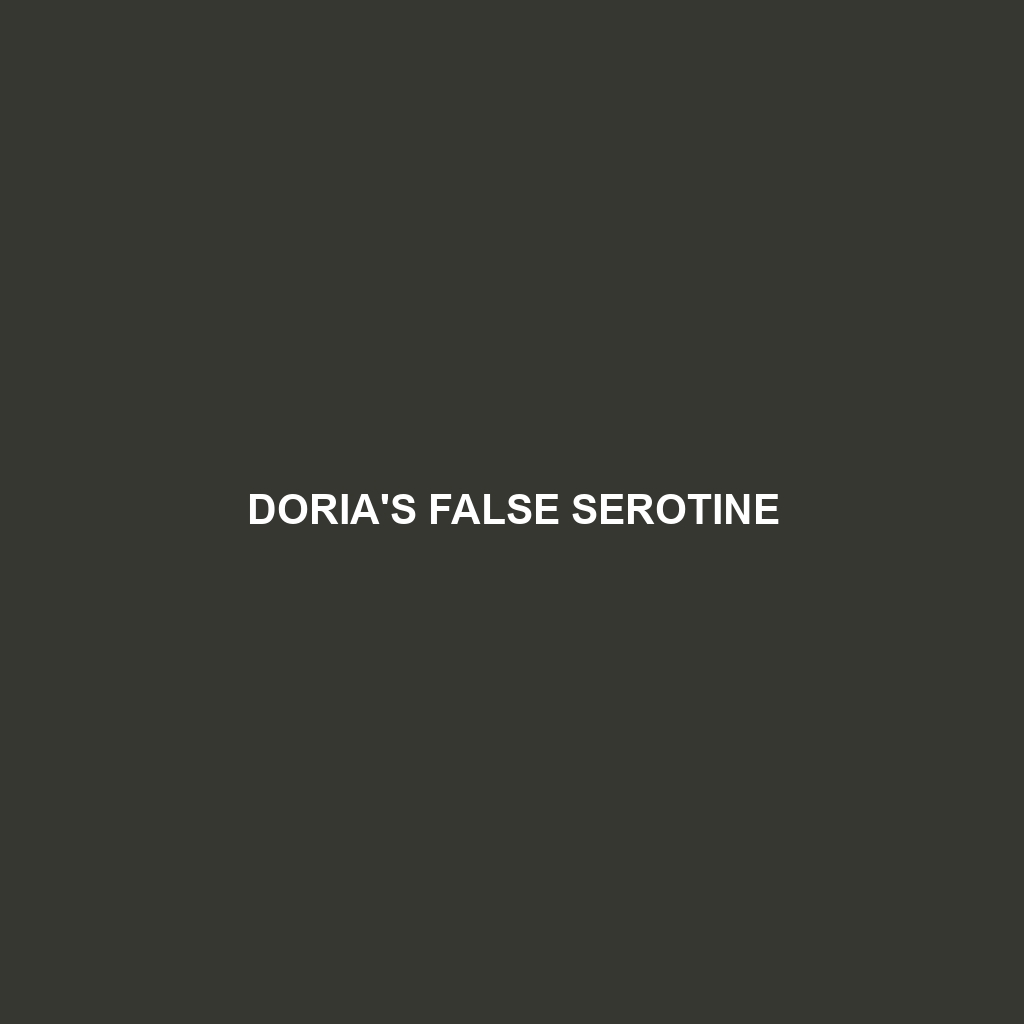Doria’s False Serotine
Common Name: Doria’s False Serotine
Scientific Name:
Habitat
Doria’s False Serotine primarily inhabits dense tropical rainforests, often found in areas of Southeast Asia, particularly in countries such as Indonesia and Malaysia. These bats favor lush, humid environments where they can roost in the intricate foliage and thrive in warm temperatures. Their preferred habitats are typically characterized by rich biodiversity and an abundance of flowering plants, providing essential resources for their feeding behaviors.
Physical Characteristics
Doria’s False Serotine is a medium-sized bat, with a wingspan that can reach up to 30 centimeters (approximately 12 inches). Its fur is typically a rich brown or gray color, which provides excellent camouflage against the tree bark and foliage in its forest habitat. The species features broad wings and a short, stout body, which are adapted for agile flying through dense vegetation. Notable characteristics include large ears that can detect high-frequency sounds, aiding in navigation and hunting.
Behavior
This bat species exhibits nocturnal habits, actively foraging for food during the night. Doria’s False Serotine is known for its impressive echolocation abilities, allowing it to locate prey in complete darkness. They are often seen roosting in groups, which may enhance their social interactions. During mating season, males may engage in vocalizations to attract potential mates, making them an intriguing subject for observation.
Diet
Doria’s False Serotine primarily feeds on a diet of insects, particularly moths and beetles. Their hunting strategy involves flying through the foliage of trees and capturing prey mid-flight using their agile maneuverability. The species plays a crucial role in controlling insect populations, contributing to the health of their ecosystem. Additionally, they may occasionally consume fruit, beneficial for seed dispersal in their habitat.
Reproduction
The reproductive habits of Doria’s False Serotine involve a breeding season that typically occurs during the warmer months, aligning with peak insect activity. After a gestation period of around two to three months, females give birth to a single pup. This pup is nursed until it is capable of flying and foraging independently, usually within a few weeks of birth. Post-breeding, mothers often form small maternal colonies for support and protection of their young.
Conservation Status
Doria’s False Serotine is currently classified as vulnerable by conservation organizations due to habitat destruction and fragmentation resulting from deforestation and agricultural development. Ongoing monitoring and conservation efforts are vital to ensuring the survival of this unique bat species.
Interesting Facts
One fascinating aspect of Doria’s False Serotine is its role as a pollinator for certain tropical plants. This mutualistic relationship highlights the species’ ecological importance, as it helps maintain the balance within its rainforest habitat. Furthermore, these bats are known to employ varying hunting strategies, showcasing their adaptability in foraging under different environmental conditions.
Role in Ecosystem
Doria’s False Serotine plays a critical role in its ecosystem as both a pollinator and a pest control agent. By feeding on insects, they help maintain insect populations, while their pollination activities support plant reproduction, ensuring a healthy and diverse environment. The interconnectedness of Doria’s False Serotine with other species and its habitat underscores its importance in sustaining biodiversity in tropical ecosystems.
